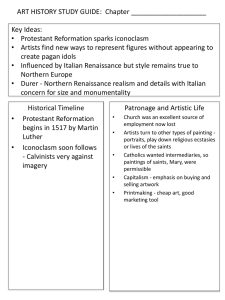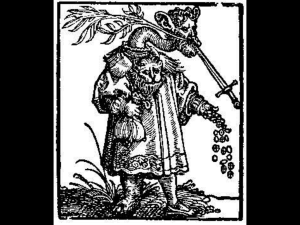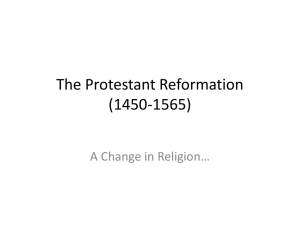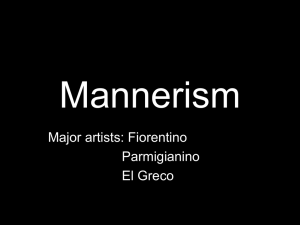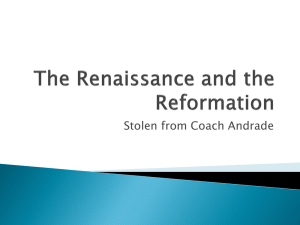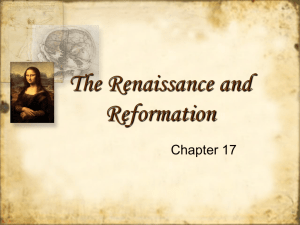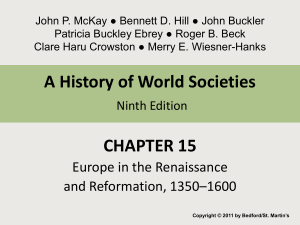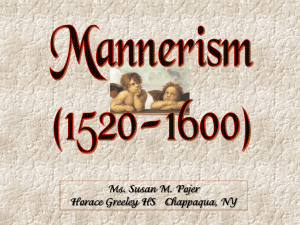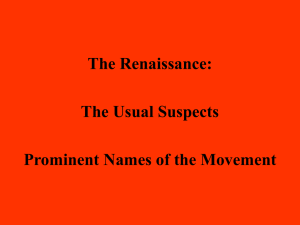Northern Humanism, Northern Renaissance, Religious
advertisement
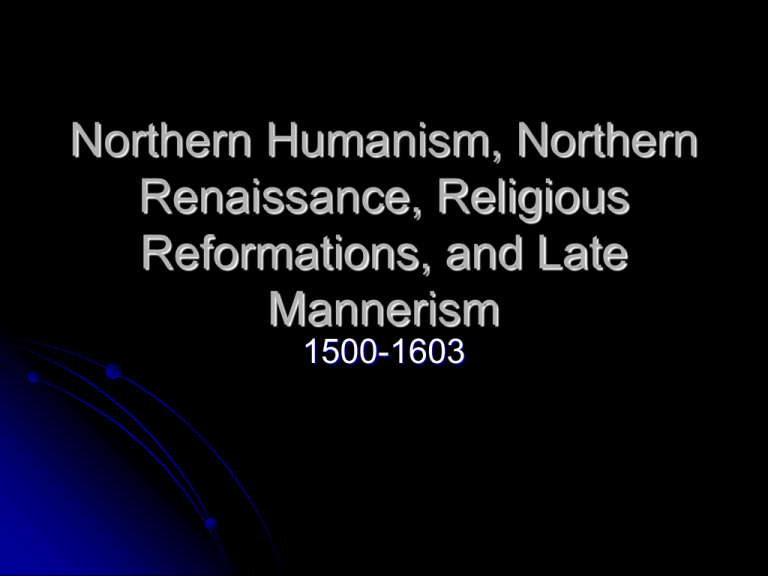
Northern Humanism, Northern Renaissance, Religious Reformations, and Late Mannerism 1500-1603 Focus of Chapter Northern Humanism - Inspired by both Classical studies and Late Medieval lay piety. Reformation Counter-Reformation Late Mannerism Northern Humanism Study of Christian writings and GrecoRoman classics Emphasis on simplicity and Christ’s teachings Rabelais – French humanist Marguerite of Angouleme Erasmus – most influential humanist of the period. Author of The Praise of Folly The Northern Renaissance The culture of sixteenth century Northern Europe Northern Renaissance literature Montaigne – Essays Shakespeare – Renaissance and Mannerist plays Northern Renaissance Painting Influence of Protestant Reformation on painting Secular subjects Durer Paintings (portraits) and engravings Durer Durer Durer Durer Grunewald Isenheim Altarpiece Bosch Peter Bruegel Bruegel The Protestant Reformation Causes: Radical reshaping of Western society Spiritual yearnings of human beings Historical trends occurring during the Middle Ages Corruption and abuses in the church Rise of sovereign states Decay of medieval thought Revival of humanism Luther In 1517, published his Ninety-five Theses against sale of indulgences, the sacraments, and authority of the pope In 1520 Pope Leo X excommunicated Luther Luther’s beliefs Salvation comes from God’s grace, not good works Sole source of authority was the Bible, not Pope Retained only two sacraments: baptism and communion Translated Bible into vernacular Married Katherine von Bora Luther Calvin Institutes of the Christian Religion Belief in predestination Government subordinate to the state Calvinism was the most international of the new sects John Calvin The Reform of the English Church In 1529, King Henry VIII asked the pope to annul his marriage to Catherine of Aragon, who failed to produce a male heir When the pope denied his request, Henry declared himself head of the Church of England Anglican beliefs are summarized in the Thirtynine Articles Elizabeth became queen and head of the English Church. King Henry VIII Queen Elizabeth The Counter Reformation Roman Catholic Reform Movement Three fronts Reformed papacy New Monastic Orders Council of Trent Church’s unyielding position Late Mannerism and the Baroque Influenced by the Counter-Reformation Arts and music should be accessible to everyone Sole aim of art was to serve the Church A simplified art that spoke to the masses This didn’t happen until the Baroque Period Late Mannerist art was too complex El Greco His paintings embody the spirit of Late Mannerism Spanish Spiritual vision Elongated bodies, sharp lines, luminous colors El Greco El Greco El Greco El Greco Tintoretto Feverish, emotional style Last Supper Tintoretto Tintoretto Extra Credit Assignments for this Chapter Read Erasmus, In Praise of Folly and write a response Read Luther’s Ninety-Five Theses and write a response Read Hamlet or watch a version of Hamlet and write a response Required Assignments for this chapter Watch Luther DVD and write a response
